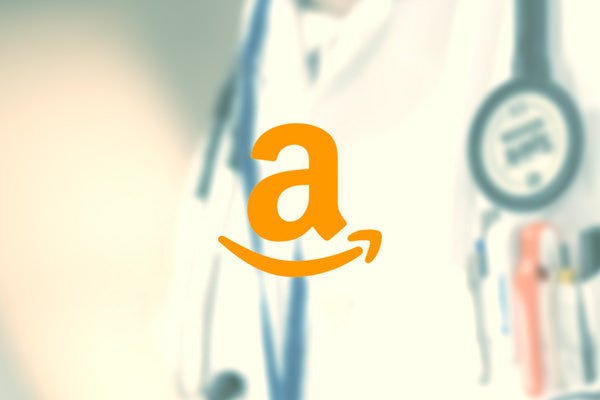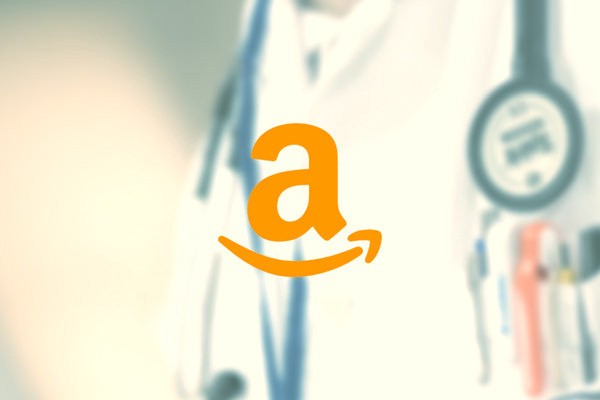institute for
health transformation
Joaquim Cardoso MSc
Senior Advisor for Continuous Health Transformation
and Digital Health
January 9, 2023
Executive Summary
What is the context?
- The traditional healthcare model in the United States is facing significant challenges due to ongoing patient surges, workforce shortages, and unstable financial conditions.
- These challenges have been exacerbated by the COVID-19 pandemic, which has highlighted the need for disruption from outside entities to improve efficiency, accessibility, and innovation in healthcare.
Who are the new entrants?
- Big tech companies like Amazon, with their strong consumer-facing technologies and established reach and scale, are well-positioned to take advantage of this shift towards virtual or virtually-enabled care.
What are the challenges?
- However, it is important to recognize that the traditional healthcare model also has inherent strengths that big tech lacks, and the way forward will require collaboration between the two.
- Traditional healthcare providers have a unique advantage in terms of patient engagement and a human element that is often essential to high-quality care.
- Big tech can bring efficiency, accessibility, and innovation to healthcare, but traditional providers have the resources, breadth of care, access to data, and responsibility to be their community’s preferred partner in care.
What are the recommendations?
- To position the healthcare system for long-term success, traditional providers must leverage the disruptive forces of big tech to create navigable, discoverable, accessible, and personalized experiences for patients.
To position the healthcare system for long-term success, traditional providers must leverage the disruptive forces of big tech to create navigable, discoverable, accessible, and personalized experiences for patients.
DEEP DIVE

Fear creates urgency: Big tech’s move into healthcare can lead to a better system for all
MedCityNews
By DEREK STREAT
Oct 4, 2022
The traditional model of healthcare delivery has reached a breaking point.
Ongoing patient surges, workforce shortages, and unstable financial conditions have exacerbated longstanding inefficiencies within the U.S. healthcare system.
Disruption from outside entities is now a necessity.
Disruption from outside entities is now a necessity.
Amazon’s acquisition of One Medical is the latest move emphasizing big tech’s strengths in critical areas the traditional healthcare model lacks — accessibility, efficiency, and innovation.
Competitive non-traditional forces and the pandemic have led to a great awakening emphasizing the valuable role consumer-facing technologies can play in delivering high-quality, accessible, and affordable care.
Healthcare consumers now expect flexibility and choice in how they receive care, and with $250 billion of US healthcare spend potentially shifting to virtual or virtually enabled care post-Covid, big tech can leverage its pre-established reach and scale this success to broaden healthcare access and satisfy consumer demands.
Healthcare consumers now expect flexibility and choice in how they receive care, and with $250 billion of US healthcare spend potentially shifting to virtual or virtually enabled care post-Covid, …
… big tech can leverage its pre-established reach and scale this success to broaden healthcare access and satisfy consumer demands.
Yet it’s also important to recognize that the traditional healthcare model has inherent strengths that big tech lacks.
The way forward is not a matter of “or”, but “and”, which will require collaboration between traditional and disruptive forces.

Leveraging traditional strengths
Despite the alarmist headlines surrounding Amazon and other major outsider moves into healthcare, incumbents have undeniable advantages over new entrants.
At a high level, people know and trust them, and health systems possess the resources, breadth of care, access to data, and responsibility required to be their community’s preferred partner in care.
Health systems have a unique advantage in terms of engagement due simply to the personal relationship they foster with patients.
Looking ahead, however, modern concepts of engagement will include streamlining traditional patient experiences, and quickly evolve to engaging patients between episodes of care to support whole-person health, further develop the digital patient profile, and deliver personalized experiences.
Looking ahead, however, modern concepts of engagement will include streamlining traditional patient experiences, and quickly evolve to engaging patients between episodes of care to support whole-person health, further develop the digital patient profile, and deliver personalized experiences.
Health systems also have a key advantage in that a substantial amount of care, including most procedures and many specialized services, will likely always require some level of human involvement from highly trained providers, even when enabled by technology.
This human element inevitably involves some level of inefficiency, however, from both a time and financial standpoint.
Tech giants like Amazon are discouraged by their shareholders from including inefficient human elements, and instead are incentivized to remove these aspects from their business models.
To position the healthcare system for long-term success, traditional healthcare providers must tap into new disruptive forces to create navigable, discoverable, accessible, and personalized experiences for patients who now expect a new consumer-centered model of care.
So, what happens when all the efficiencies are matched with innovations, brought to market by disruptors, but a key element of quality care still requires human involvement?

Learning from disruptive forces
The answer lies squarely in the middle.
The digitally-driven, on-demand conveniences that most consumers have come to expect in other industries for over a decade became a practical reality in healthcare throughout the past two-plus years.
Health systems must catch up given the evolution in consumer and clinician expectations.
Patients have become healthcare consumers and expect a digital experience on par with e-commerce shopping.
If virtually any consumer good can be delivered to your doorstep with the push of a button, why can’t finding a healthcare provider be just as easy?
The race to capture patients and keep them in-network by incorporating digitally-driven efficiency is underway, and traditional healthcare entities can’t achieve this on their own.
The race to capture patients and keep them in-network by incorporating digitally-driven efficiency is underway, and traditional healthcare entities can’t achieve this on their own.
Big tech has tremendous potential to provide value in healthcare, particularly when it comes to consumer reach.
These companies have mastered the ability to scale access and provide a personalized consumer experience.
To put this in perspective, approximately 44% of Americans have an active Amazon Prime membership, while the largest U.S. health system, HCA Healthcare, serves just 1% of Americans.
… approximately 44% of Americans have an active Amazon Prime membership, while the largest U.S. health system, HCA Healthcare, serves just 1% of Americans.
Google estimates their search engine receives more than a billion health-related searches every day, totaling 7% of all daily searches.
Furthermore, 90% of Americans live within 10 miles of a Walmart store.
While Walmart is a traditional player in retail, they are evolving into a consumer tech platform that’s also made significant progress shaking up the primary care space.
While Walmart is a traditional player in retail, they are evolving into a consumer tech platform that’s also made significant progress shaking up the primary care space.

Improving the system relies on unification of strengths
Traditional health systems are uniquely positioned to drive the change that patients need.
These systems deliver most of the country’s healthcare services, they intimately understand the complexity of care delivery, and have trusted brands.
Given the complexity of the healthcare industry along with the data and privacy issues involved, understanding this landscape and scale of care is critical to driving sustainable innovation.
Ultimately, health systems are domain experts, and as such, the onus is on them to disrupt from within and not view disruptive changes as a signal to slow down from the pandemic-driven momentum.
Ultimately, health systems are domain experts, and as such, the onus is on them to disrupt from within and not view disruptive changes as a signal to slow down from the pandemic-driven momentum.
Health systems must disrupt their existing business models quickly — but do so deliberately and in partnership with the big tech companies like Amazon who can propel the system forward.
Ultimately, all entities big and small, public and private, will have a place in this new realm, but it has to be done purposefully to strike the right balance. This will lead to a supersystem that works for everyone.
Ultimately, all entities big and small, public and private, will have a place in this new realm, but it has to be done purposefully to strike the right balance. This will lead to a supersystem that works for everyone.
Originally published at https://medcitynews.com on October 4, 2022.
About the author & affiliations
Derek Streat
Derek is Founder, CEO and Chairman of DexCare. He is an accomplished healthcare technology entrepreneur and executive, having co-founded and/or been at the earliest stages of six venture-backed companies including C-SATS (acquired by Johnson & Johnson), Classmates (acquired by United Online), Medify (acquired by Alliance Health Networks) and AdReady (acquired by CPXi).








